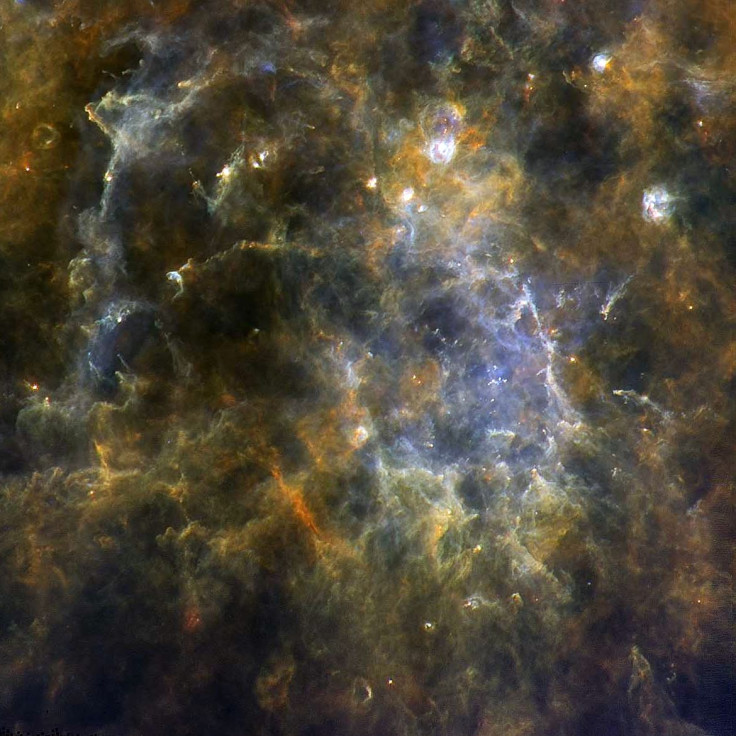Intricate Web Of Filaments In Milky Way's Stellar Nursery Captured By ESA

European Space Agency (ESA) released a stunning cosmic shot Monday, which showcased stellar activity in the constellation of Carina, located some 7,500 light years away from Earth. The image, taken by the agency’s Herschel space observatory in different wavelengths, highlighted a star-forming region of the constellation, with a chaotic web of gas filaments and dark bubbles scattered across bright hotspots or points where baby stars are born.
According to the space agency, this network, if dense enough, directly contributes to the process of star-birth. The filaments or “strands” of gas become increasingly unstable and form clumps of material under the impact of gravity and eventually, new stars come into existence from these dense, collapsed blobs.
Previous observations from the space telescope noted the filamentary webs can be commonly seen in the closer areas of our galaxy, particularly in regions lying within a few hundred light years. Plus, in nearby star-forming clouds, within some 1,500 light-years of the sun, these “threads” have also been observed to carry the same width — about a third of a light-year. This indicates all the nearby structures might have originated in a similar fashion.
Apart from the web of gas, viewers can also see varying star-birth activity in this image. The cooler regions of the nursery emit light at longer wavelengths and were represented with a red-brownish hue, while the hotter zones, where star-formation is more intense, were depicted with blue and white colors.
There are also some regions with extreme levels of brightness. These extraordinary spots are the places where luminous and massive stars are forming, and that too in big numbers.
Though our galaxy incorporates scores of stellar nurseries, this specific constellation, draws immediate attention, thanks to its special features. It hosts the famous Carina Nebula, one of the largest clouds of gas and dust in the plane of our galaxy, along with Eta Carinae, which is one of the brightest and most massive stellar systems in our galaxy. This is probably why ESA turned its space observatory to capture the intricate features of this region.
© Copyright IBTimes 2024. All rights reserved.





















